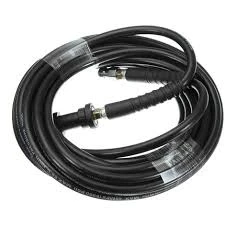power steering hose psi
Understanding Power Steering Hose PSI What You Need to Know
Power steering systems are vital for modern vehicles, enabling drivers to maneuver their cars with ease. One of the critical components of this system is the power steering hose, which transports hydraulic fluid from the pump to the steering gear. An essential aspect of this system is the pressure at which the fluid operates, often measured in pounds per square inch (PSI). Understanding the significance of power steering hose PSI can help vehicle owners maintain their cars better and avoid potential issues.
The Role of Power Steering Hose
Before diving into PSI, it’s crucial to understand the function of the power steering hose. This hose is designed to withstand high pressures and transport hydraulic fluid essential for power-assisted steering. When a driver turns the steering wheel, the power steering pump circulates fluid through the hoses, allowing for smoother and easier steering. If the hoses are damaged or the system isn’t functioning correctly, it can lead to a loss of steering assistance and potentially dangerous situations on the road.
What is PSI in Power Steering Systems?
PSI, or pounds per square inch, is a unit of pressure that indicates how much force is exerted over a given area. In the context of power steering systems, PSI measures the pressure of the hydraulic fluid inside the power steering hose. Typically, a power steering system operates between 1,200 to 1,500 PSI, although this can vary depending on the vehicle's make and model. Maintaining the correct PSI is crucial for effective steering performance.
Importance of Maintaining Correct PSI
1. Optimal Steering Performance The primary reason for maintaining correct PSI in power steering hoses is to ensure optimal steering performance. If the pressure is too low, the steering may become sluggish or unresponsive. Conversely, excessively high pressure can lead to an increased risk of hose rupture or failure.
2. Preventing Hose Damage Over time, exposure to extreme pressures can weaken power steering hoses. If the hose breaks, it can result in fluid leaking and potentially leave the driver without power steering assistance. Regular inspections and monitoring of the PSI can help detect issues before they escalate.
power steering hose psi

3. Avoiding Costly Repairs A malfunctioning power steering system can lead to extensive damage not just to the hoses but to the pump and other components. By ensuring that the PSI remains within the appropriate range, vehicle owners can avoid costly repairs and replacements.
Monitoring and Maintenance
To maintain the integrity of your power steering system, regular checks and maintenance are essential. Here are some steps to consider
- Visual Inspections Periodically check the hoses for signs of wear, cracks, or leaks. If any damage is detected, the hoses should be replaced immediately.
- Fluid Level Checks Low fluid levels can affect the overall health of the power steering system. Ensure the fluid is at the recommended level to maintain optimal pressure.
- Professional Inspections It’s advisable to have a qualified mechanic inspect your power steering system during routine maintenance. They can check the PSI and other components to ensure everything is functioning properly.
Conclusion
Power steering hose PSI plays a vital role in the safety and performance of a vehicle’s steering system. Understanding the significance of pressure levels in power steering hoses can help vehicle owners take proactive measures to maintain and care for their cars. Regular inspections, monitoring fluid levels, and being aware of the hose conditions will go a long way in ensuring a smooth driving experience. Remember, a well-maintained power steering system not only ensures your safety on the road but also enhances the overall longevity of your vehicle.
-
Reliable Brake Line Solutions for Your VehicleNewsJun.05,2025
-
Quick Fix for Leaky Air Conditioning HosesNewsJun.05,2025
-
Powerful Sewer Jetting Solutions for Tough ClogsNewsJun.05,2025
-
Power Steering Hose Problems SolvedNewsJun.05,2025
-
Hose Protectors That Actually WorkNewsJun.05,2025
-
Essential Hose Connectors for Every HomeNewsJun.05,2025

